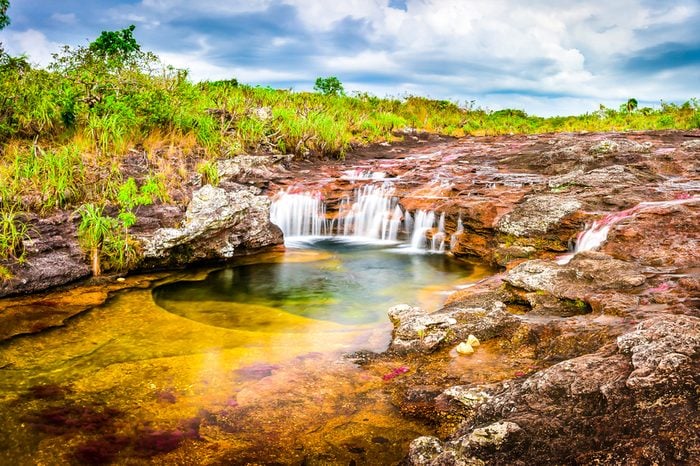
Caño Cristales, Colombia
With “the river of five colors,” also known as “the melted rainbow,” waters that are a hallucinogenic concoction of pink, red, green, and blue colors (a result of the unique microorganisms living in it) and its jaw-dropping waterfalls, Caño Cristales is now overwhelmingly popular. And, it’s only become more so after a 2016 peace agreement was signed between the government of Colombia and the country’s largest rebel group. The uptick in foot traffic is cause for concern, as it could jeopardize the area’s extremely fragile ecosystem. In 2017, access was restricted to give the river a break. “We decided to implement the restriction because human presence can harm the plants’ reproduction processes,” Faber Ramos, coordinator of the ecotourism program, told the BBC. Check out 14 more of the most naturally colorful places in the world.
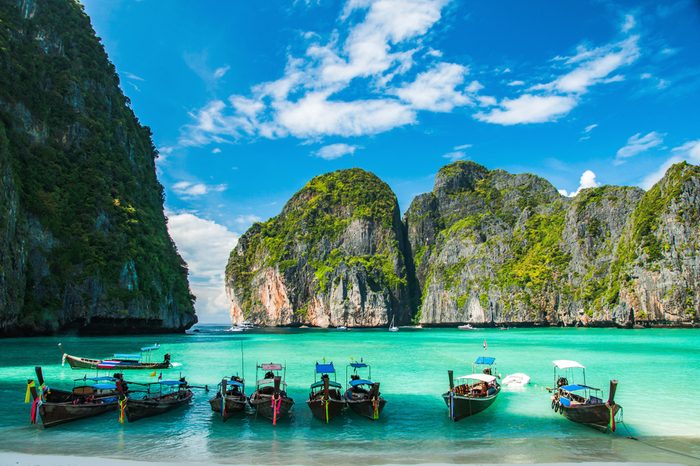
Maya Beach, Thailand
The cult classic Leonardo DiCaprio movie The Beach turned this remote beach in Thailand into a major tourist trap. It’s not hard to see why! The secluded cove features glittering, translucent water, white sands, and limestone cliffs. Then as more and more tourists flocked to the sandy shores, Maya Beach became impossible to enjoy; visitors could hardly walk, never mind lie down, here. Thailand was forced to close the beach for months in 2018. Though the closure was only supposed to be temporary, it’s now shut down indefinitely. While some “must-sees” are over-hyped, these 13 iconic sights ahead are worth braving the crowds (at least once), we promise.
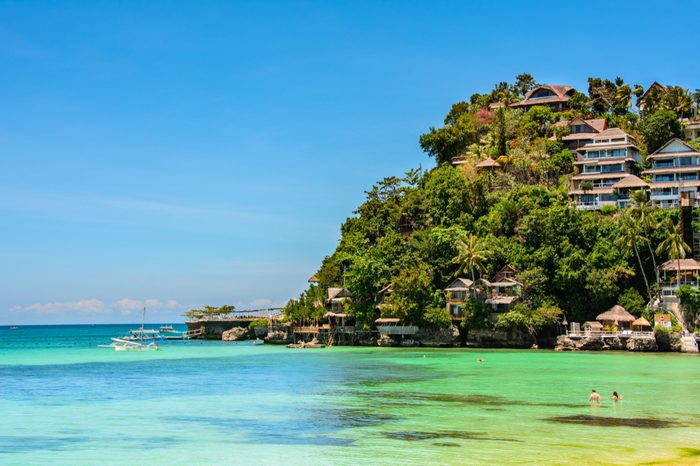
Boracay, Philippines
The beautiful island of Boracay once was revered for its exclusivity, but in recent years, mass-market tourism and lack of infrastructure have led to a major downfall. The island underwent a six-month closure to visitors in 2018 to allow authorities to restore it, reports the Telegraph. It reopened in October with strict new rules: masseuses, vendors, bonfires, watersports (save for swimming) and the builders of Boracay’s infamous sandcastles are now banned. Also under the new rules, a maximum of 19,200 tourists are allowed on the island at any one time. Many hotels and restaurants have been shut down for not meeting standards, and a mere 160 tourism-related businesses have been approved to re-open.
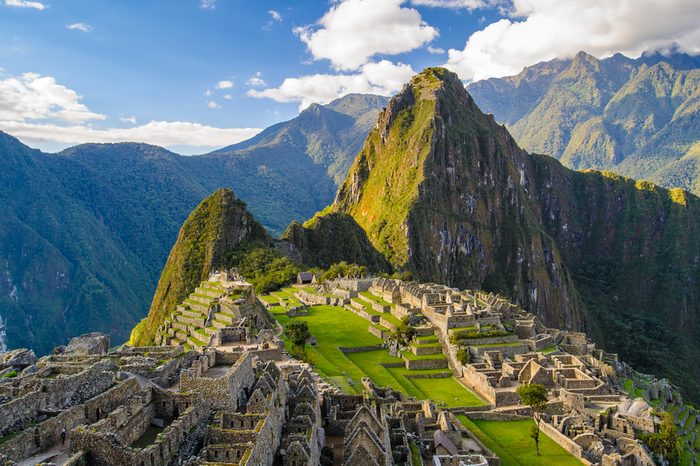
Machu Picchu, Peru
“Machu Picchu is a great attraction, but we are worried about its sustainability,” Sandra Doig, incoming tourism deputy director of PROMPERU, the Commission for the Promotion of Exports and Tourism of Peru told the Washington Post. “It is being affected by too many people at the citadel at the same time.” One of the new Seven Wonder of the World, the Incan citadel is set high in the Andes Mountains in Peru. Getting there is quite a feat, and yet record numbers of visitors flood the region annually (610,000 from January to July 2018). To combat the masses damaging the site, tourism authorities are attempting to impose strict time slots, advance ticket purchase, and visitor limits.
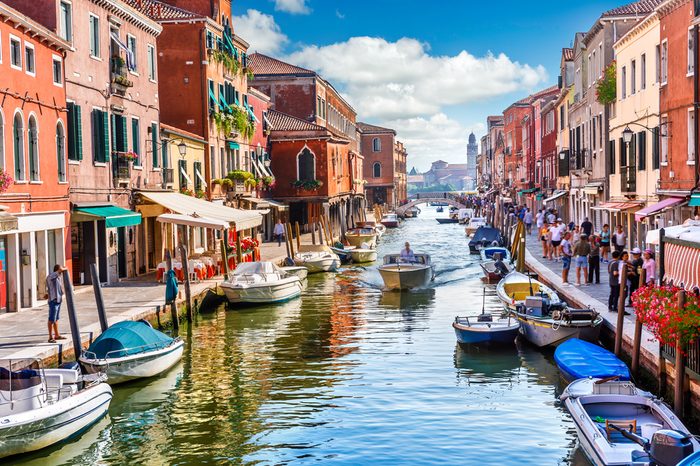
Venice, Italy
Built on more than 100 small islands in a lagoon in the Adriatic Sea, the main allure of Venice is its famed canals, while the abundance of delicious food and wine, the culture, and the ornate architecture add to its allure. But over-tourism has chipped away at the city’s vitality. Cruise ships and group bus tours have made infamous sights like St. Marks Square a blur of people and the streets are lined with litter; between the hoards of humans and the rising sea levels, Venice is sinking rapidly and the stonework and carvings on its historic buildings are crumbling, due to visits from the world’s worst tourists. Venetians are finally fighting back, however: Beginning summer of 2019, short stay tourists will be charged up to €10 (about $11.50) to enter the city. Don’t miss these 15 under-the-radar places to visit.
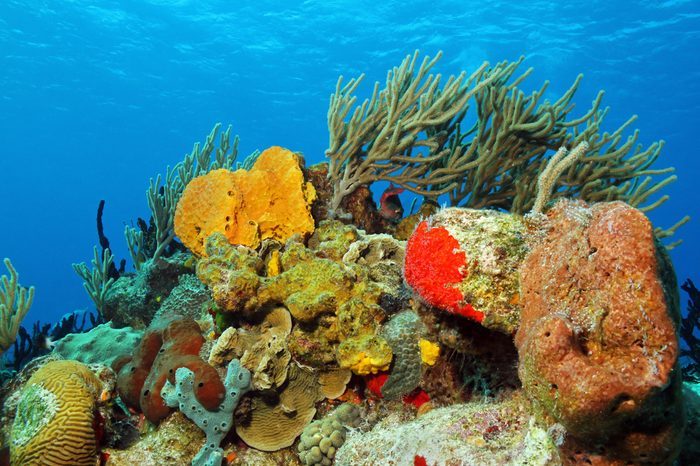
Cozumel, Mexico
The azure waters of Cozumel, an island situated off the Yucatan peninsula in Mexico, has become a popular tourist spot especially for Americans and Canadians looking to relax in the sun. Many visitors arrive via cruise ship, which has harmed one of the idyllic island’s most prized possessions: coral reef. It’s no secret coral is delicate. Global climate change and ocean acidification have proven this and now the boat traffic, which has damaged the reef further out, is adding to the damage. To combat the issue, marine biologist German Mendez has started an organization called the “Cozumel Coral Reef Restoration Program,” to protect the reef.
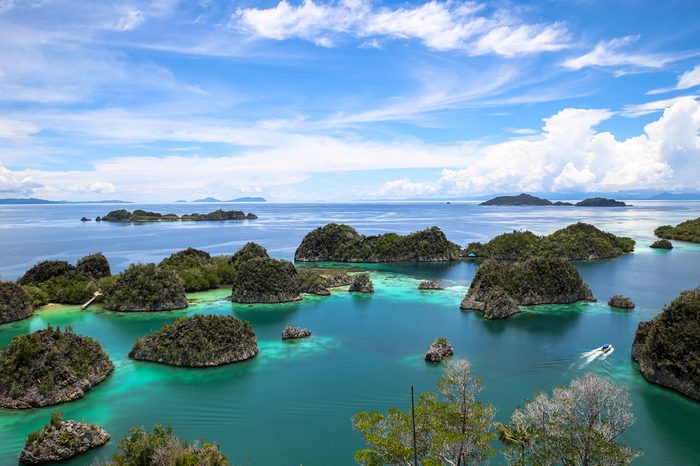
Raja Ampat Islands, Indonesia
This Indonesian archipelago near the island of New Guinea is made up of four big islands, one medium-sized one, and thousands of tiny islands all of which forms part of Coral Triangle, where some of the richest marine biodiversity resides. The breathtaking beauty of this spot, also referred to as “the Four Kings,” has brought a mass of tourists via cruise ships. In March of 2017, a 295-foot cruise ship called the Caledonian Sky only worsened the concern of over-tourism, as it got caught in low tide and ran aground in the reef, resulting in $18.6 million worth of damage and an estimated decades-long recovery time for the reef, according to a team of environmentalists and academics.
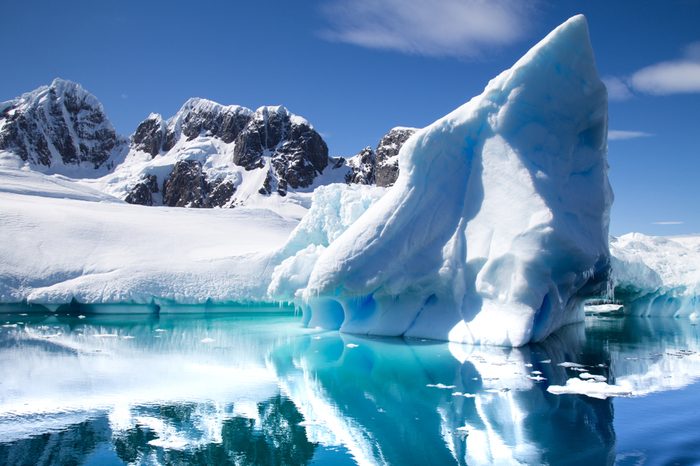
Antarctica
The entire continent of Antarctica is in trouble, between global climate change and the mass infiltration of tourists via cruise ships. The boat traffic, from Chile and Argentina down to the Antarctic Peninsula, has greatly increased water pollution, threatening the lives of unique species. The Antarctic Treaty has sought to stop such environmental devastation, limiting the number of people allowed on shore to 100 at a time, while ships carrying more than 500 passengers are not allowed at any of the landing sites.
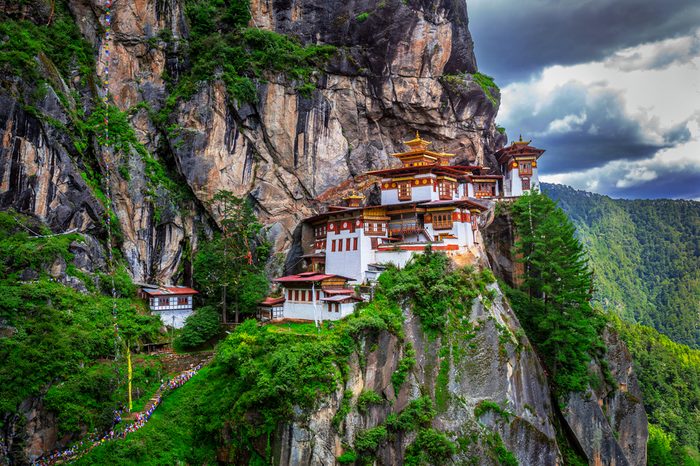
Bhutan
The land-locked country of Bhutan, a Buddhist kingdom on the Himalayas’ eastern edge, is a favorite among tourists for its monasteries, fortresses, and dramatic landscapes. Visitors were not allowed in Bhutan until the 1970s, which has only added to its popularity. Unfortunately, pollution has wreaked havoc on the natural beauty of Bhutan, causing the government to implement tourism restrictions. Visitors must go through an official tour guide and pay around £200 per day (about $228). “Last year the industrial town of Pasakha in the south found itself in the unenviable position of being in the top ten of the world’s most polluted cities.” Jet Cost told Country Living. “There are growing concerns about the impact that tourism is having on the nation and its contribution to pollution, which may lead to a more severe policy than already exists.”
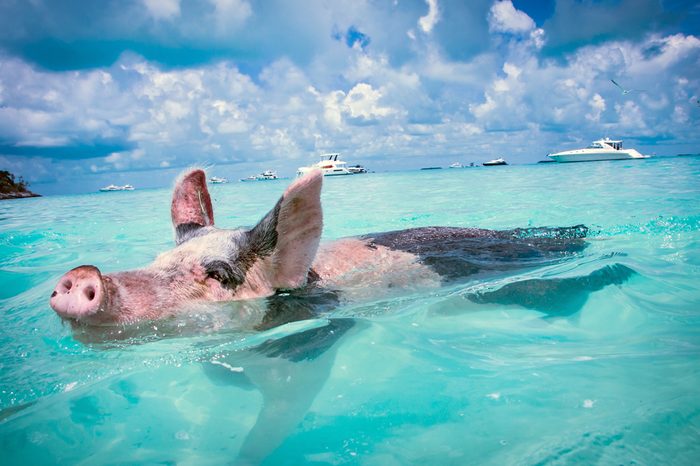
Pig Beach, The Bahamas
The only inhabitants of Big Major Cay are wild pigs, known most famously for swimming in the sea, a phenomenon that draws tourists to the island off Exuma for an encounter and photo opp. In 2017, a wave of pig deaths struck Pig Beach. While a combination of factors likely lead to their death, reports National Geographic, the government banned visitors from feeding the creatures. Find out the most popular tourist attraction in every state.
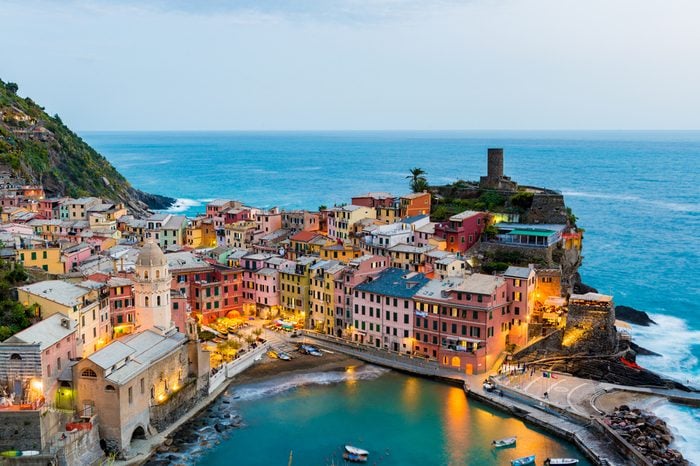
Cinque Terre, Italy
When the sun hits the bright houses on the cliff side of the Italian Riviera, tourists whip their cameras out for the perfect shot of architectural and natural beauty. Cinque Terre’s idealistic setting has increased the numbers of visitors to the area in recent years. The rise of tourism in the area has “taken a toll on the infrastructure of the towns and visitors have been injured in landslides on separate occasions,” Jet Cost told Harper’s Bazaar. While there are currently no restrictions set in place, authorities have discussed putting a cap on tourists allowed in the five villages per year, possibly 1.5 million; the area currently sees about 2.4 million tourists per year.
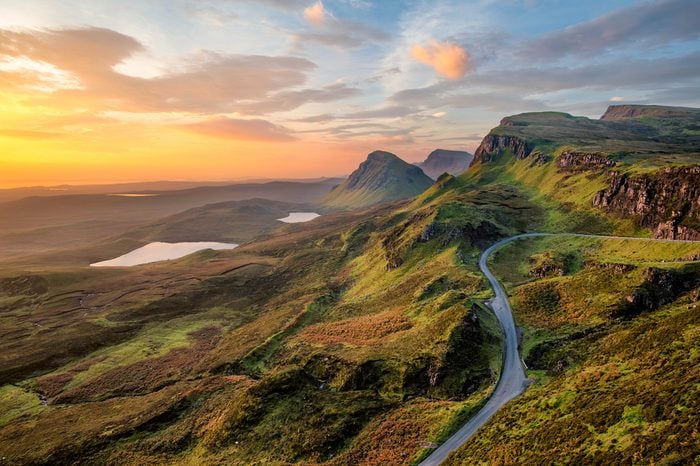
The Isle of Skye, Scotland
One of the most picturesque places in the United Kingdom, The Isle of Skye is known for its rugged landscapes, quaint fishing villages, and medieval castles. Crossing the Skye Bridge to the island from Scotland’s northwest coast is a test of patience these days, with hoards of people packed in caravans, motorhomes, and cars, often in stand-still traffic. Visitors without prior booking accommodations have found themselves in a pickle. According to authorities, tourists often arrive at the police station with nowhere to stay asking for advice. Many end up staying the night in their car. Local authorities have taken note, advising visitors to use “common sense” before traveling to the island for an overnight stay.
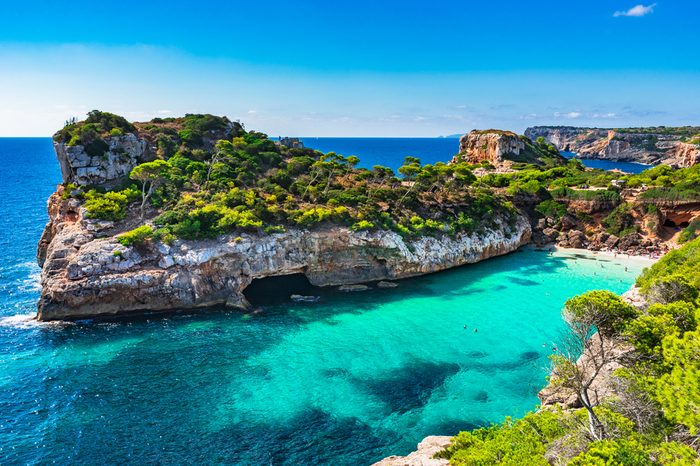
Mallorca, Spain
In 2017, a reported ten million travelers visited Mallorca, up from just six million in 2010, according to the European Union Regional Development Fund. With stunning beach resorts, sheltered coves, limestone mountains, Roman and Moorish ruins, and top-notch nightlife, it’s no surprise this island in the Mediterranean is such a draw. However, the increase in tourism has resulted in an “extreme environmental crisis” and the “commercialization of the landscape, environment, and heritage,” as noted by local group Ciutat. As a result, officials double the tourism tax to €4 (about $4.64) per person per day, which is added to hotel stays. According to Pilar Carbonell, the Balearic’s director of tourism, the funds “support a sustainable model so that tourism to the islands benefits local communities.”
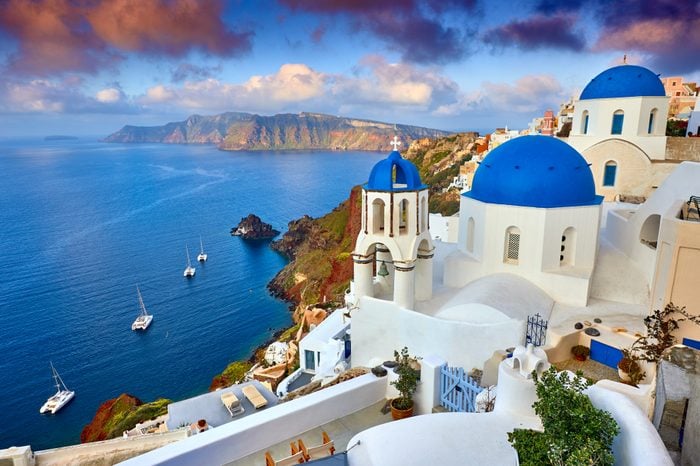
Santorini, Greece
One of the Cyclades islands in the Aegean Sea, Santorini is outfitted with whitewashed, cubiform houses tucked into cliffs overlooking the sea. The fascination of this Grecian delight is not lost on visitors. One of its many splendors is that the whole complex of Santorini islands is still an active volcano, thought to be the only one in the world whose crater is in the sea. At just 29 square miles, Santorini has become one of the country’s most popular destinations, so much so that the island has suffered from rising water and energy consumption. According to Mayor Nikos Zorzos, “It’s a radical rise and we are forever playing catch-up. We have built numerous desalination plants and are in the process of erecting the biggest one in Greece, but in five years’ time I worry even that won’t be enough.” In order to cut down the number of visitors, Santorini restricted the amount of cruise ship visitor numbers to 8,000 per day in 2017.
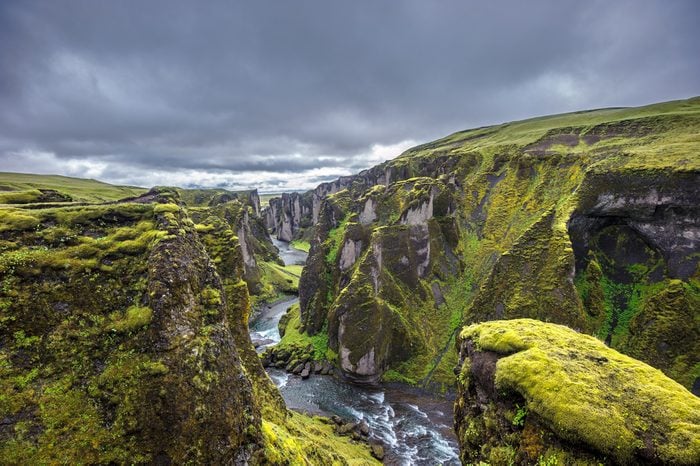
Fjadrargljufur canyon, Iceland
Iceland’s Fjadrargljufur canyon is a truly breathtaking place to travel to. This gorgeous natural wonder, with 328-foot tall walls, was really only visited by locals until it was featured in Justin Beiber’s 2015 music video for his song “I’ll Show You”. After its release, the foot traffic in Fjadrargljufur began to increase rapidly. The Environment Agency of Iceland had to close all public paths to the canyon for the time being because they couldn’t withstand all the people. “There has been an increase of 50% to 80% between 2016, 2017 and 2018,” Daníel Freyr Jonsson, head of the Environmental Agency of Iceland, told Icelandic news outlet RUV. Justin Bieber shouldn’t be blamed for the canyon being closed to the public though. This natural wonder should be able to be enjoyed by all visitors, but first, a better infrastructure needs to be built to ensure that people will be safe when visiting.
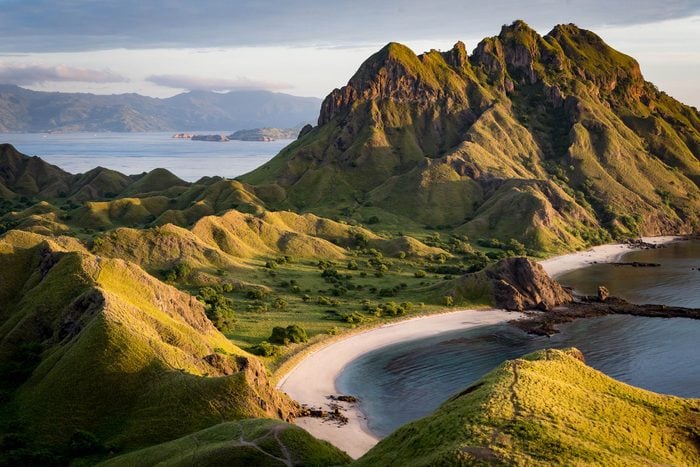
Komodo Island, Indonesia
Komodo Island, the home of the Komodo Dragon, in Indonesia is set to temporary close in January 2020. This tourist destination had to be shut down because a smuggling ring was stealing dragons and selling them for about $35,000. There are only about 6,000 Komodo dragons left in the world and their population is concentrated in Indonesia’s Komodo National Park. While the park is closed, conservationists will go in and evaluate the animal’s food supply and work of preserving native plant species. A reopening date has not yet been set. Any tourists that still wish to see the lizards in their natural habitat are able to do so in other areas of the park, including Rinca and Gili Motong islands.
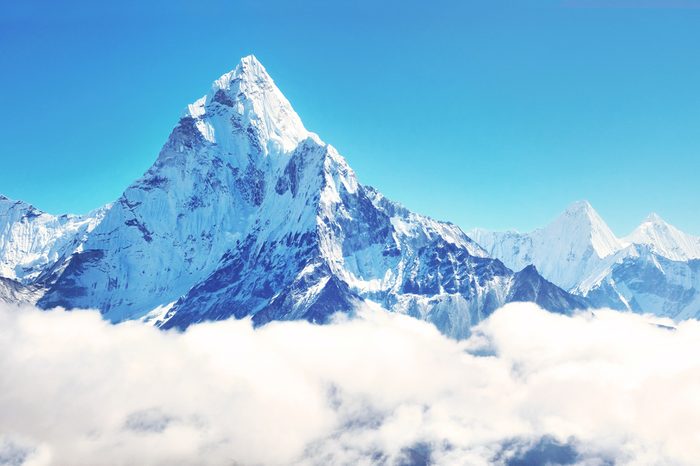
Mount Everest
Despite the 2015 Nepal earthquake that closed Mount Everest to the thrill seekers looking to climb the mountain’s treacherous slopes, Mount Everest saw 36,694 visitors passing through the Everest region in 2016. The Sherpa guides have suffered the consequences, however, as they are the ones tasked with collecting the gross amounts of waste left behind by tourists. They even threatened to go on strike in an effort to receive higher wages for their dangerous job. Next, read on for 50 of the most overrated tourist attractions in the world.